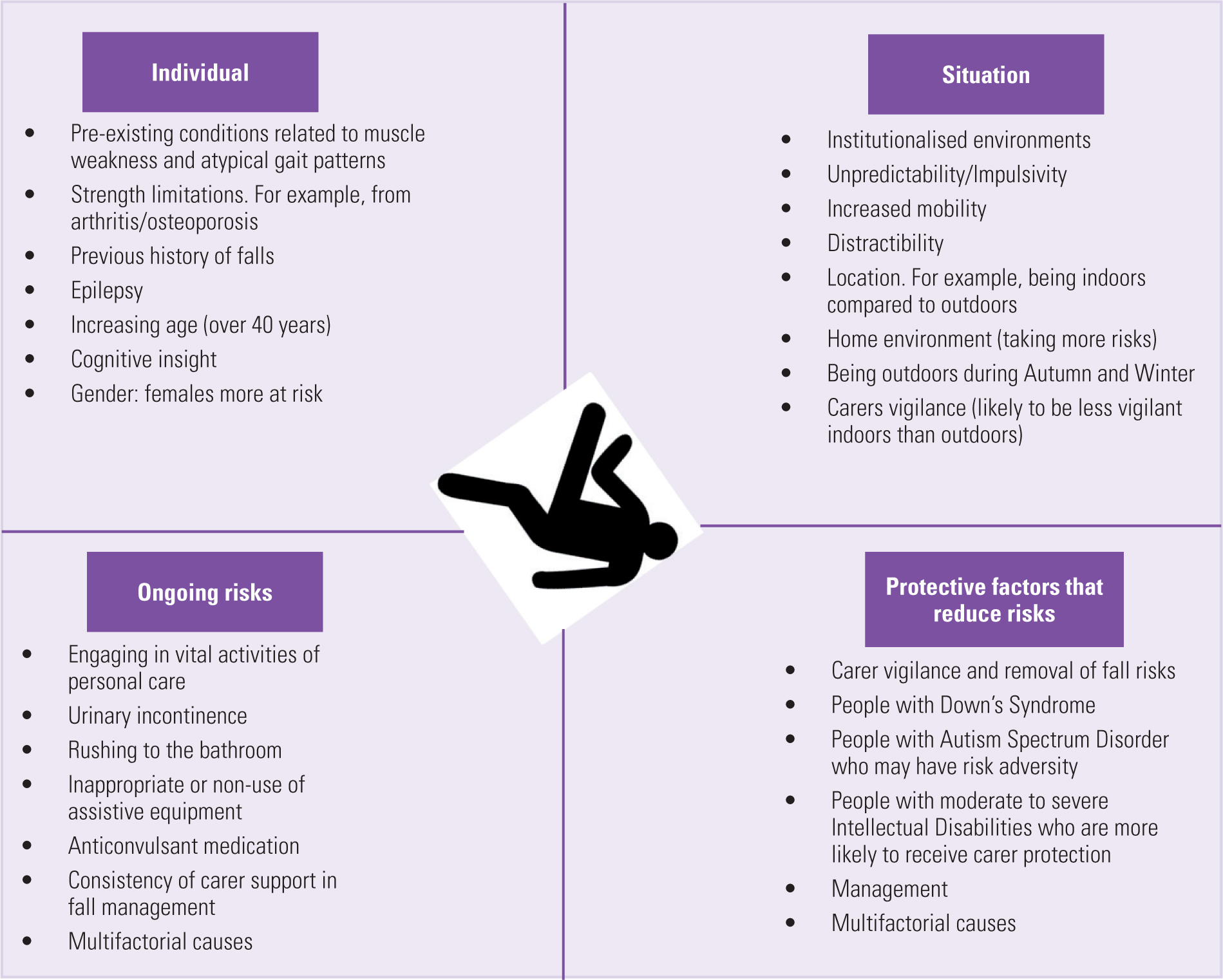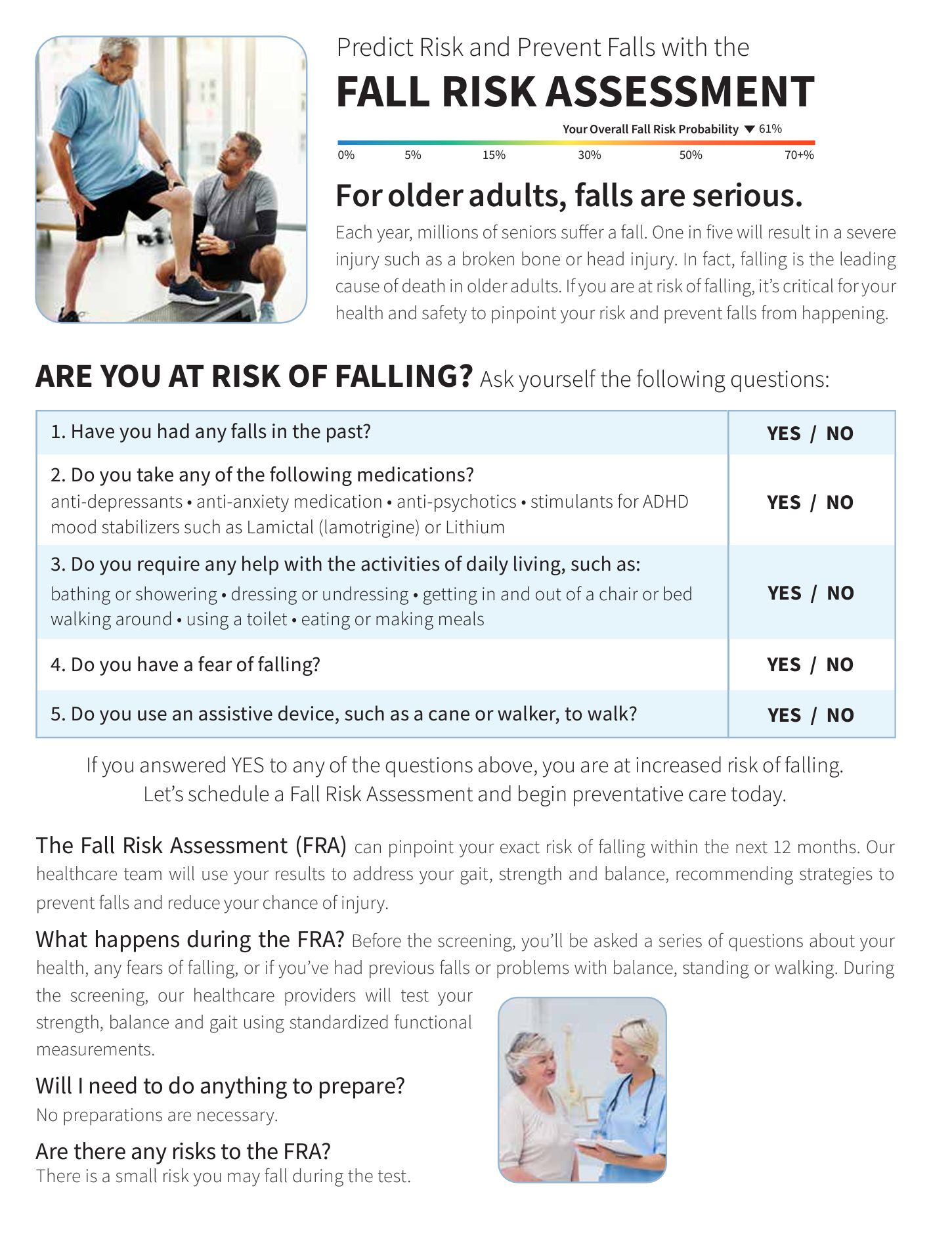Little Known Facts About Dementia Fall Risk.
Not known Incorrect Statements About Dementia Fall Risk
Table of ContentsHow Dementia Fall Risk can Save You Time, Stress, and Money.Facts About Dementia Fall Risk RevealedIndicators on Dementia Fall Risk You Need To KnowDementia Fall Risk Fundamentals ExplainedSome Known Factual Statements About Dementia Fall Risk
Ensure that there is a designated location in your clinical charting system where personnel can document/reference ratings and document appropriate notes related to fall avoidance. The Johns Hopkins Loss Risk Analysis Device is one of numerous tools your staff can make use of to help stop unfavorable clinical occasions.Individual drops in health centers prevail and debilitating unfavorable occasions that linger in spite of years of effort to minimize them. Improving communication across the assessing nurse, care group, patient, and individual's most included loved ones may enhance fall avoidance efforts. A team at Brigham and Female's Healthcare facility in Boston, Massachusetts, sought to create a standard autumn avoidance program that focused around improved communication and patient and family interaction.

The development group highlighted that successful application relies on patient and personnel buy-in, integration of the program right into existing workflows, and integrity to program processes. The team kept in mind that they are facing how to ensure continuity in program implementation throughout periods of crisis. During the COVID-19 pandemic, as an example, an increase in inpatient falls was connected with limitations in patient interaction in addition to restrictions on visitation.
Dementia Fall Risk for Dummies
These events are usually considered avoidable. To apply the intervention, companies need the following: Accessibility to Autumn TIPS sources Fall ideas training and re-training for nursing and non-nursing personnel, including new nurses Nursing operations that permit patient and household engagement to conduct the falls evaluation, make sure usage of the prevention plan, and perform patient-level audits.
The outcomes can be highly damaging, typically increasing person decrease and creating longer medical facility remains. One study estimated stays enhanced an additional 12 in-patient days after a person loss. The Fall TIPS Program is based on engaging patients and their family/loved ones across three major processes: evaluation, customized preventative treatments, and auditing to make certain that people are participated in the three-step fall avoidance process.
The individual assessment is based upon the Morse Loss Scale, which is a confirmed loss danger analysis device for in-patient medical facility settings. The scale includes the six most usual reasons patients in health centers drop: the patient fall history, high-risk problems (including polypharmacy), use IVs and other external tools, psychological status, stride, and flexibility.
Each danger element links with one or even more actionable evidence-based interventions. The registered nurse develops a plan that incorporates the interventions and is noticeable to the see this care team, patient, and family on a laminated poster or printed visual aid. Registered nurses create the strategy while consulting with the patient and the client's household.
The Only Guide to Dementia Fall Risk
The poster offers as an interaction device with other participants of the individual's care team. Dementia Fall Risk. The audit element of the program includes examining the patient's expertise of their danger elements and prevention plan at the system and medical facility levels. Nurse champions conduct at the very least five individual interviews a month with clients and their households to look for understanding of the fall avoidance plan

A projected 30% of these falls outcome in injuries, which can range in seriousness. Unlike other damaging occasions that call for a standard clinical feedback, loss avoidance depends highly on the requirements of the client. Consisting of the input of people who understand the person ideal enables for greater customization. This technique has actually confirmed to be much more efficient than autumn prevention programs that are based mostly on the production of a threat score and/or are not customizable.
What Does Dementia Fall Risk Mean?

Based upon bookkeeping results, one website had 86% conformity and 2 websites had over 95% conformity. A cost-benefit analysis of the Autumn TIPS program in 8 healthcare facilities estimated that the program cost $0.88 per patient to execute and led to savings of $8,500 per 1000 patient-days in straight expenses connected to the prevention of 567 tips over three years and 8 months.
According to the technology group, companies interested over here in executing the program should perform a preparedness evaluation and drops prevention spaces evaluation. 8 Additionally, organizations should ensure the essential facilities and workflows for implementation and create an implementation plan. If one exists, the organization's Fall Prevention Task Pressure need to be entailed in planning.
The 20-Second Trick For Dementia Fall Risk
To begin, organizations must make sure conclusion of training modules by registered nurses and nursing aides - Dementia Fall Risk. Medical facility personnel should analyze, based on the requirements of a health center, whether to use a digital health document printout or paper version of the loss avoidance plan. Applying teams should hire and educate registered nurse champions and develop procedures for bookkeeping and coverage on autumn information
Staff need to be involved in the process of revamping the process to engage clients and household in the assessment and prevention plan process. Systems ought to be in place to make sure that systems can understand why a fall occurred and remediate the reason. Extra especially, nurses should have networks to offer continuous feedback to both personnel and device leadership so they can adjust and enhance autumn prevention workflows and communicate systemic problems.